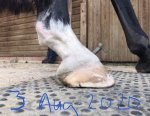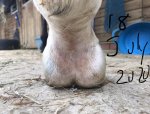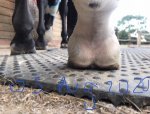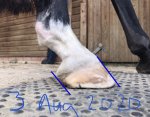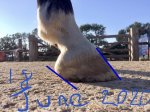horses99
Well-Known Member
Thank you for all your comments I am so pleased good or bad to have some conversation on this topic. I spoke to my vet again she gave him less than 5% chance of coming sound enough to go back to work. I have contacted Rockley farm I love my boy and will give him every chance if everything fails then I tried my best but he is the sweetest and most loving I have ever met. I am waiting for Rockley to get back to me and see what she says... meantime in response to some comments the wedges are temporary and then he is to be in the field likely barefoot at which point later on he could go to Rockley. He has such a large legion my vet advised a year to heal + injection to bursar just before a year to test soundness either way i will investigate Rockley and see what happens trying likely both who knows depends how he reacts. The biggest issue is re injury not just being sound.


